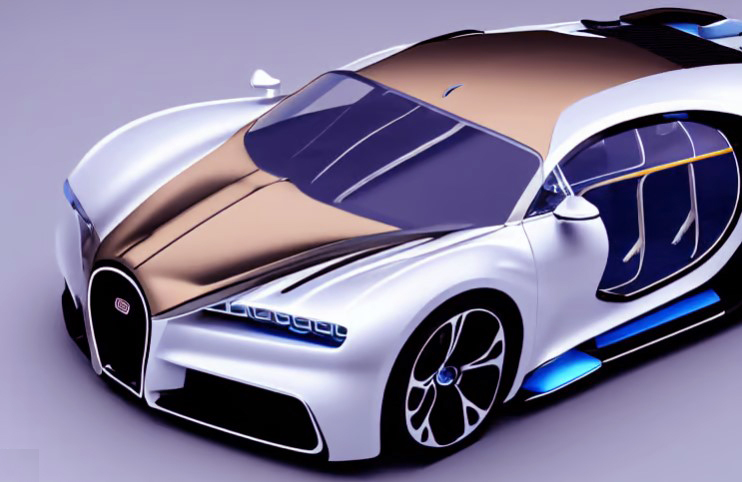The Pinnacle of Automotive Excellence: A Comprehensive Guide to Luxury Car Design
Luxury car design represents the apex of automotive engineering, combining cutting-edge technology, superior materials, and unparalleled craftsmanship to create vehicles that are not only modes of transportation but also symbols of status and elegance. This guide delves into the essence of luxury car design, explores current trends, and highlights the key elements that distinguish these vehicles from the rest. Whether you are an enthusiast, a potential buyer, or simply curious, this article will provide an in-depth look at what makes luxury cars truly exceptional.
The Essence of Luxury Car Design
Luxury car design is characterized by meticulous attention to detail, innovative engineering, and an unwavering commitment to quality. These vehicles are crafted to offer an extraordinary driving experience, blending performance, comfort, and aesthetic appeal. The essence of luxury car design can be distilled into several core elements:
- Exquisite Materials: Luxury cars are built using the finest materials available. From hand-stitched leather interiors to high-quality wood and metal accents, every component is chosen to enhance the vehicle’s overall aesthetic and tactile experience.
- Advanced Technology: Cutting-edge technology is at the heart of luxury car design. This includes advanced infotainment systems, state-of-the-art driver assistance features, and innovative safety technologies that ensure both convenience and security.
- Superior Craftsmanship: The craftsmanship involved in luxury car manufacturing is second to none. Skilled artisans meticulously assemble these vehicles, ensuring that every detail meets the highest standards of quality and precision.
- Performance and Handling: Luxury cars are engineered to deliver exceptional performance. Powerful engines, advanced suspension systems, and precision handling ensure a driving experience that is both exhilarating and refined.
- Aesthetic Appeal: The design of a luxury car is a work of art. Sleek lines, elegant curves, and a commanding presence combine to create a vehicle that is as beautiful as it is functional.
Key Elements of Luxury Car Design
- Exterior Design: The exterior design of a luxury car is its first impression, and it is crafted to be striking and sophisticated. Key elements include:
- Sculpted Body Lines: Smooth, flowing lines that enhance the car’s aerodynamics and visual appeal.
- Signature Grilles: Distinctive grilles that often feature the manufacturer’s emblem, serving as a hallmark of the brand.
- LED Lighting: Advanced LED headlights and taillights that provide superior illumination and a modern look.
- High-Quality Paint: Premium paint finishes that offer depth, gloss, and durability.
- Interior Design: The interior of a luxury car is designed to provide the utmost in comfort and convenience. Features include:
- Premium Materials: Soft-touch leathers, natural wood trim, and brushed metal accents.
- Ergonomic Seating: Seats that are designed for comfort and support, often with multiple adjustments and heating/cooling functions.
- Advanced Infotainment: High-resolution displays, intuitive controls, and connectivity features that keep occupants entertained and informed.
- Ambient Lighting: Subtle lighting that enhances the cabin’s ambiance and creates a relaxing atmosphere.
- Performance Features: Performance is a cornerstone of luxury car design. Key performance features include:
- Powerful Engines: High-output engines that provide smooth, effortless acceleration.
- Advanced Suspension: Suspension systems that offer a balance of comfort and sporty handling.
- Precision Steering: Responsive steering systems that provide excellent feedback and control.
- Braking Systems: High-performance brakes that offer superior stopping power and reliability.
- Safety and Technology: Safety is paramount in luxury car design, and these vehicles are equipped with the latest technologies to protect occupants. Features include:
- Driver Assistance Systems: Technologies such as adaptive cruise control, lane-keeping assist, and automated parking.
- Collision Avoidance: Advanced systems that detect potential collisions and take preventive action.
- Airbag Systems: Comprehensive airbag systems that provide protection in the event of an accident.
- Connectivity: Features such as smartphone integration, Wi-Fi hotspots, and advanced navigation systems.
Trends in Luxury Car Design
- Electrification: The shift towards electric vehicles (EVs) is a major trend in luxury car design. Manufacturers are investing heavily in developing high-performance electric powertrains that offer impressive range, rapid acceleration, and zero emissions.
- Sustainability: Sustainability is becoming increasingly important in luxury car design. This includes the use of eco-friendly materials, sustainable manufacturing processes, and efforts to reduce the overall environmental impact of vehicles.
- Autonomous Driving: Autonomous driving technology is rapidly advancing, and many luxury cars now feature semi-autonomous driving capabilities. This technology enhances safety and convenience, allowing drivers to relax and enjoy the journey.
- Customization: Personalization is a growing trend in luxury car design. Manufacturers offer a wide range of customization options, allowing buyers to tailor their vehicles to their exact preferences. This includes choices for interior materials, exterior colors, and bespoke features.
- Minimalist Aesthetics: Minimalism is making its mark on luxury car interiors, with clean lines, uncluttered dashboards, and intuitive controls. This design philosophy emphasizes simplicity and elegance, creating a serene driving environment.
Practical Tips for Choosing a Luxury Car
- Define Your Priorities: Determine what aspects of luxury are most important to you, whether it’s performance, comfort, technology, or aesthetics. This will help you narrow down your choices.
- Research Brands and Models: Different brands have unique strengths and design philosophies. Research various manufacturers and models to find the ones that align with your preferences and needs.
- Consider Resale Value: Luxury cars tend to depreciate quickly, so consider the long-term value of your investment. Some brands and models hold their value better than others.
- Test Drive Multiple Vehicles: Experience the driving dynamics, comfort, and features of multiple luxury cars before making a decision. A test drive will give you a better sense of which vehicle suits you best.
- Explore Customization Options: Take advantage of customization options to create a vehicle that reflects your personal style. Many manufacturers offer extensive personalization programs.
- Evaluate Technology: Ensure that the vehicle’s technology meets your needs. This includes infotainment systems, driver assistance features, and connectivity options.
- Consider Ownership Costs: Luxury cars come with higher ownership costs, including maintenance, insurance, and fuel. Factor these into your decision-making process.
Conclusion
Luxury car design is a blend of art, science, and engineering, resulting in vehicles that offer an unparalleled driving experience. By focusing on quality materials, advanced technology, and superior craftsmanship, manufacturers create cars that are both beautiful and functional. Whether you’re drawn to the sleek lines of a coupe, the spacious comfort of an SUV, or the cutting-edge technology of an electric vehicle, there is a luxury car to suit every taste and lifestyle. Understanding the key elements and trends in luxury car design will help you make an informed decision and choose a vehicle that embodies your definition of luxury.




